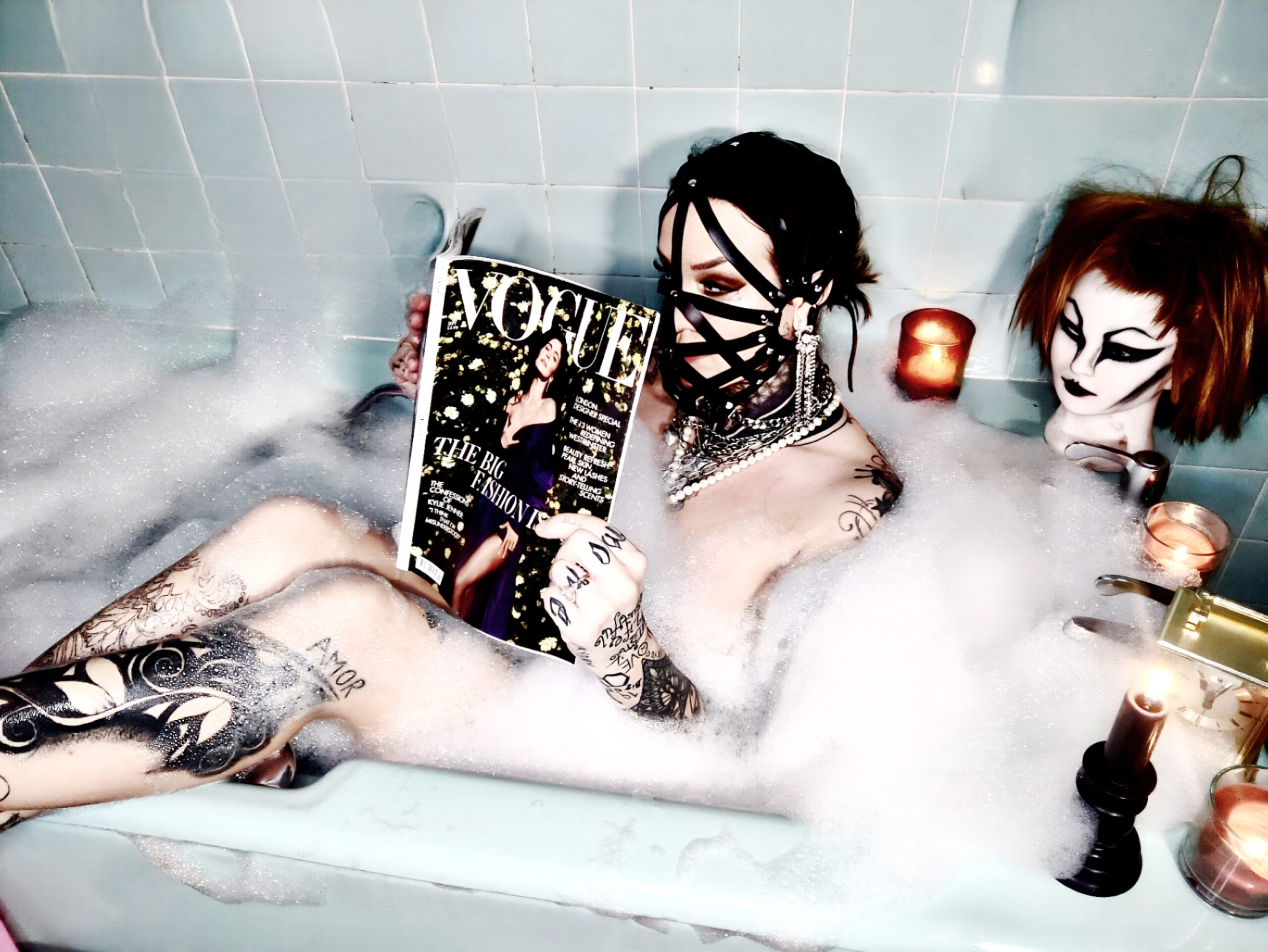Pansexuality Defined
Pansexuality is an identity defined by romantic, sexual, or emotional attraction to individuals regardless of their gender identity or expression. This inclusivity extends beyond traditional binary categories, encompassing people of all genders, including transgender, non-binary, and genderqueer individuals. Recognizing and understanding pansexuality is crucial in fostering a more inclusive and accepting environment for diverse relationship dynamics in today’s society.
Meaning and Scope
Pansexuality is an identity defined by romantic, sexual, or emotional attraction to individuals regardless of their gender identity or expression. This inclusivity extends beyond traditional binary categories, encompassing people of all genders, including transgender, non-binary, and genderqueer individuals.
Understanding pansexuality is important because it recognizes the diversity of human experience and challenges rigid societal norms surrounding attraction.
- Pansexual individuals may be attracted to people of any gender identity or expression.
- Pansexuality differs from bisexuality, which typically refers to attraction to two genders.
- Embracing pansexuality contributes to a more inclusive and accepting society where all individuals feel seen and valued for who they are.
Distinction from Bisexuality
Pansexuality is an identity defined by romantic, sexual, or emotional attraction to individuals regardless of their gender identity or expression. This inclusivity extends beyond traditional binary categories, encompassing people of all genders, including transgender, non-binary, and genderqueer individuals.
Understanding pansexuality is important because it recognizes the diversity of human experience and challenges rigid societal norms surrounding attraction.
Pansexual individuals may be attracted to people of any gender identity or expression. Pansexuality differs from bisexuality, which typically refers to attraction to two genders.
History and Evolution of the Term

The term “pansexuality” has evolved significantly over time, reflecting a growing understanding and acceptance of diverse sexual orientations. Initially emerging in the 20th century, it gained prominence as a way to describe attraction that transcends traditional binary categories of male and female.

Origins and Early Usage
The term “pansexuality” has evolved significantly over time, reflecting a growing understanding and acceptance of diverse sexual orientations. Initially emerging in the 20th century, it gained prominence as a way to describe attraction that transcends traditional binary categories of male and female.
Early usage of the term often focused on physical attraction, but its meaning has expanded to encompass romantic, emotional, and spiritual connections as well.
The early 20th century saw discussions about “pansexuality” within academic and intellectual circles, with writers and thinkers exploring the concept of attraction beyond traditional gender norms.
It’s important to note that the understanding and terminology surrounding sexual orientation have been fluid throughout history, with concepts evolving and gaining broader acceptance over time.
Modern Understanding and Acceptance
Pansexuality is an identity defined by romantic, sexual, or emotional attraction to individuals regardless of their gender identity or expression. This inclusivity extends beyond traditional binary categories, encompassing people of all genders, including transgender, non-binary, and genderqueer individuals. Recognizing and understanding pansexuality is crucial in fostering a more inclusive and accepting environment for diverse relationship dynamics in today’s society.
Pansexuality is an identity defined by romantic, sexual, or emotional attraction to individuals regardless of their gender identity or expression. This inclusivity extends beyond traditional binary categories, encompassing people of all genders, including transgender, non-binary, and genderqueer individuals.
Understanding pansexuality is important because it recognizes the diversity of human experience and challenges rigid societal norms surrounding attraction.

- Pansexual individuals may be attracted to people of any gender identity or expression.
- Pansexuality differs from bisexuality, which typically refers to attraction to two genders.
- Embracing pansexuality contributes to a more inclusive and accepting society where all individuals feel seen and valued for who they are.
The term “pansexuality” has evolved significantly over time, reflecting a growing understanding and acceptance of diverse sexual orientations. Initially emerging in the 20th century, it gained prominence as a way to describe attraction that transcends traditional binary categories of male and female.
Early usage of the term often focused on physical attraction, but its meaning has expanded to encompass romantic, emotional, and spiritual connections as well.
The early 20th century saw discussions about “pansexuality” within academic and intellectual circles, with writers and thinkers exploring the concept of attraction beyond traditional gender norms.
It’s important to note that the understanding and terminology surrounding sexual orientation have been fluid throughout history, with concepts evolving and gaining broader acceptance sex dolls over time.
Social Significance in Inclusive Relationships
In today’s increasingly inclusive society, understanding diverse relationship models is crucial. Pansexuality, an identity defined by attraction to individuals regardless of gender identity or expression, plays a significant role in this evolution. Recognizing pansexuality challenges traditional notions of attraction and fosters a more accepting environment for all relationship styles.
Expanding Definitions of Love and Attraction
Pansexuality, an identity defined by attraction to individuals regardless of their gender identity or expression, contributes significantly to the evolving landscape of inclusive relationships. This concept challenges conventional understandings of love and attraction, expanding definitions beyond the confines of traditional binary categories.
Embracing pansexuality is crucial for fostering a society that celebrates diversity in all its forms. It acknowledges the validity and richness of human experience, recognizing that love and attraction can transcend societal norms and expectations.
Challenging Binary Gender Norms
Pansexuality is an identity defined by attraction to individuals regardless of their gender identity or expression. This inclusivity extends beyond traditional binary categories, encompassing people of all genders, including transgender, non-binary, and genderqueer individuals.
Understanding pansexuality is important because it recognizes the diversity of human experience and challenges rigid societal norms surrounding attraction.
- Pansexual individuals may be attracted to people of any gender identity or expression.
- Pansexuality differs from bisexuality, which typically refers to attraction to two genders.
- Embracing pansexuality contributes to a more inclusive and accepting society where all individuals feel seen and valued for who they are.
The term “pansexuality” has evolved significantly over time, reflecting a growing understanding and acceptance of diverse sexual orientations. Initially emerging in the 20th century, it gained prominence as a way to describe attraction that transcends traditional binary categories of male and female.
Early usage of the term often focused on physical attraction, but its meaning has expanded to encompass romantic, emotional, and spiritual connections as well.
The early 20th century saw discussions about “pansexuality” within academic and intellectual circles, with writers and thinkers exploring the concept of attraction beyond traditional gender norms.
It’s important to note that the understanding and terminology surrounding sexual orientation have been fluid throughout history, with concepts evolving and gaining broader acceptance over time.
In today’s increasingly inclusive society, understanding diverse relationship models is crucial. Pansexuality, an identity defined by attraction to individuals regardless of gender identity or expression, plays a significant role in this evolution. Recognizing pansexuality challenges traditional notions of attraction and fosters a more accepting environment for all relationship styles.
Pansexuality, an identity defined by attraction to individuals regardless of their gender identity or expression, contributes significantly to the evolving landscape of inclusive relationships. This concept challenges conventional understandings of love and attraction, expanding definitions beyond the confines of traditional binary categories.
Embracing pansexuality is crucial for fostering a society that celebrates diversity in all its forms. It acknowledges the validity and richness of human experience, recognizing that love and attraction can transcend societal norms and expectations.
Promoting Diversity and Representation
Pansexuality, an identity defined by romantic, sexual, or emotional attraction to individuals regardless of their gender identity or expression, plays a crucial role in shaping inclusive relationship dynamics. It challenges traditional binary views of attraction and fosters a more accepting environment for diverse relationship styles.
Recognizing pansexuality is essential for creating a society that embraces diversity and celebrates the spectrum of human experiences. By understanding and accepting pansexual individuals, we contribute to a more inclusive and equitable world where all individuals feel valued and respected for who they are.
Pansexuality expands our understanding of love and attraction, demonstrating that relationships can flourish beyond rigid societal norms. It encourages us to challenge preconceived notions and embrace the richness and complexity of human connection.
Challenges Faced by Pansexual Individuals
While pansexuality is gaining recognition, individuals who identify as pansexual still face unique challenges in today’s society. These challenges stem from a lack of understanding and societal biases surrounding gender and sexuality.
Misunderstandings and Stigma
One major challenge faced by pansexual individuals is the prevalence of misunderstandings about what pansexuality actually means. Many people mistakenly associate it with bisexuality, failing to recognize the crucial distinction that pansexuality encompasses attraction to all genders, including those outside the traditional binary.
This lack of understanding can lead to assumptions and stereotypes about pansexual individuals, further marginalizing them and making it difficult for them to express their identities openly.
Another significant challenge is stigma and discrimination. Pansexual people may encounter prejudice from family members, friends, or society at large, facing rejection, ridicule, or even violence based on their sexual orientation.
These negative experiences can lead to feelings of isolation, fear, and shame, hindering their ability to live authentically and fully embrace their pansexual identities.
Lack of Visibility and Representation in Media
One major challenge faced by pansexual individuals is the prevalence of misunderstandings about what pansexuality actually means. Many people mistakenly associate it with bisexuality, failing to recognize the crucial distinction that pansexuality encompasses attraction to all genders, including those outside the traditional binary.
This lack of understanding can lead to assumptions and stereotypes about pansexual individuals, further marginalizing them and making it difficult for them to express their identities openly.
Another significant challenge is stigma and discrimination. Pansexual people may encounter prejudice from family members, friends, or society at large, facing rejection, ridicule, or even violence based on their sexual orientation.
These negative experiences can lead to feelings of isolation, fear, and shame, hindering their ability to live authentically and fully embrace their pansexual identities.
Furthermore, the lack of visibility and representation of pansexual individuals in media and popular culture perpetuates these misconceptions and contributes to societal ignorance.
Without seeing themselves reflected in mainstream narratives, pansexual people may struggle to feel seen, validated, and understood.
This limited representation can also make it harder for them to connect with others who share their experiences and build supportive communities.
Internalized Homophobia and Biphobia
Pansexual individuals often face internalized homophobia and biphobia, even when they are aware of and accept their pansexuality. This internalized negativity stems from the pervasive societal messages that associate same-gender attraction with something negative or undesirable.
Growing up in a society that often stigmatizes non-heteronormative identities can lead to pansexual individuals questioning their own feelings, fearing rejection, and suppressing parts of themselves to conform to societal expectations.
These internalized biases can manifest in various ways, such as self-doubt, anxiety around coming out, or a reluctance to engage in relationships with people of the same gender.
Overcoming internalized homophobia and biphobia is a crucial step for pansexual individuals to achieve full acceptance and well-being. This process often involves challenging societal stereotypes, engaging in self-reflection, and building support systems that affirm their identities.
Resources and Support for Pansexual People
Navigating the world as a pansexual individual can present unique challenges, but there are numerous resources available to provide support and guidance.
Organizations like The Trevor Project offer crisis intervention and suicide prevention services specifically for LGBTQ+ youth, including pansexual individuals.
Additionally, PFLAG (Parents, Families, and Friends of Lesbians and Gays) provides support for both LGBTQ+ individuals and their families, fostering understanding and acceptance within families and communities.
Online platforms like GLAAD and Human Rights Campaign offer valuable information about pansexuality, advocate for LGBTQ+ rights, and connect individuals with local resources and support groups.
Connecting with other pansexual individuals through online forums or in-person meetups can create a sense of community and belonging, offering valuable support and shared experiences.
Organizations and Online Communities
Pansexual people deserve access to reliable information and supportive communities. Here are some resources that offer guidance, advocacy, and a sense of belonging:
- The Trevor Project: Provides crisis intervention and suicide prevention services for LGBTQ+ youth, including pansexual individuals.
- PFLAG (Parents, Families, and Friends of Lesbians and Gays): Offers support for both LGBTQ+ individuals and their families, fostering understanding and acceptance within families and communities.
- GLAAD: Works to promote LGBTQ+ acceptance through media advocacy and provides valuable information about pansexuality.
- Human Rights Campaign (HRC): Advocates for LGBTQ+ equality and connects individuals with local resources and support groups.
Online forums and social media groups dedicated to pansexual individuals can provide a safe space for connection, shared experiences, and mutual support.
Educational Materials and Information
Pansexuality is an identity defined by romantic, sexual, or emotional attraction to individuals regardless of their gender identity or expression. This inclusivity extends beyond traditional binary categories, encompassing people of all genders, including transgender, non-binary, and genderqueer individuals. Recognizing and understanding pansexuality is crucial in fostering a more inclusive and accepting environment for diverse relationship dynamics in today’s society.
Understanding pansexuality is important because it recognizes the diversity of human experience and challenges rigid societal norms surrounding attraction. Pansexual individuals may be attracted to people of any gender identity or expression. Pansexuality differs from bisexuality, which typically refers to attraction to two genders. Embracing pansexuality contributes to a more inclusive and accepting society where all individuals feel seen and valued for who they are.
The term “pansexuality” has evolved significantly over time, reflecting a growing understanding and acceptance of diverse sexual orientations. Initially emerging in the 20th century, it gained prominence as a way to describe attraction that transcends traditional binary categories of male and female. Early usage of the term often focused on physical attraction, but its meaning has expanded to encompass romantic, emotional, and spiritual connections as well.
The early 20th century saw discussions about “pansexuality” within academic and intellectual circles, with writers and thinkers exploring the concept of attraction beyond traditional gender norms. It’s important to note that the understanding and terminology surrounding sexual orientation have been fluid throughout history, with concepts evolving and gaining broader acceptance over time.
In today’s increasingly inclusive society, understanding diverse relationship models is crucial. Pansexuality, an identity defined by attraction to individuals regardless of gender identity or expression, plays a significant role in this evolution. Recognizing pansexuality challenges traditional notions of attraction and fosters a more accepting environment for all relationship styles.
Pansexuality, an identity defined by attraction to individuals regardless of their gender identity or expression, contributes significantly to the evolving landscape of inclusive relationships. This concept challenges conventional understandings of love and attraction, expanding definitions beyond the confines of traditional binary categories.
Embracing pansexuality is crucial for fostering a society that celebrates diversity in all its forms. It acknowledges the validity and richness of human experience, recognizing that love and attraction can transcend societal norms and expectations. Pansexual people deserve access to reliable information and supportive communities. Here are some resources that offer guidance, advocacy, and a sense of belonging:
- The Trevor Project: Provides crisis intervention and suicide prevention services for LGBTQ+ youth, including pansexual individuals.
- PFLAG (Parents, Families, and Friends of Lesbians and Gays): Offers support for both LGBTQ+ individuals and their families, fostering understanding and acceptance within families and communities.
- GLAAD: Works to promote LGBTQ+ acceptance through media advocacy and provides valuable information about pansexuality.
- Human Rights Campaign (HRC): Advocates for LGBTQ+ equality and connects individuals with local resources and support groups.
Online forums and social media groups dedicated to pansexual individuals can provide a safe space for connection, shared experiences, and mutual support.
Mental Health Resources and Counseling
Navigating the world as a pansexual individual can present unique challenges, but there are numerous resources available to provide support and guidance.
Organizations like The Trevor Project offer crisis intervention and suicide prevention services specifically for LGBTQ+ youth, including pansexual individuals.
Additionally, PFLAG (Parents, Families, and Friends of Lesbians and Gays) provides support for both LGBTQ+ individuals and their families, fostering understanding and acceptance within families and communities.
Online platforms like GLAAD and Human Rights Campaign offer valuable information about pansexuality, advocate for LGBTQ+ rights, and connect individuals with local resources and support groups.
Connecting with other pansexual individuals through online forums or in-person meetups can create a sense of community and belonging, offering valuable support and shared experiences.
If you’re struggling with your pansexuality or need support, please know that you are not alone.
Here are some mental health resources and counseling options available:
- The Trevor Project: Offers crisis intervention and suicide prevention services for LGBTQ+ youth.
- Trans Lifeline: Provides peer support for transgender individuals, including those who identify as pansexual.
- GLAAD: Connects individuals with mental health professionals specializing in LGBTQ+ issues.
Finding a therapist who understands and is affirming of your pansexuality can make a significant difference in your mental well-being. You deserve to feel safe, supported, and heard.
Mocha Kid Magazine
Nourish by Jane Clarke
- The Best Travel Cases For The Craftsman Series Vape - December 4, 2025
- THC Soda Vs THC Tinctures: Pros And Cons - November 29, 2025
- THC Drinks For Social Anxiety: Are They A Good Fit? - November 26, 2025
